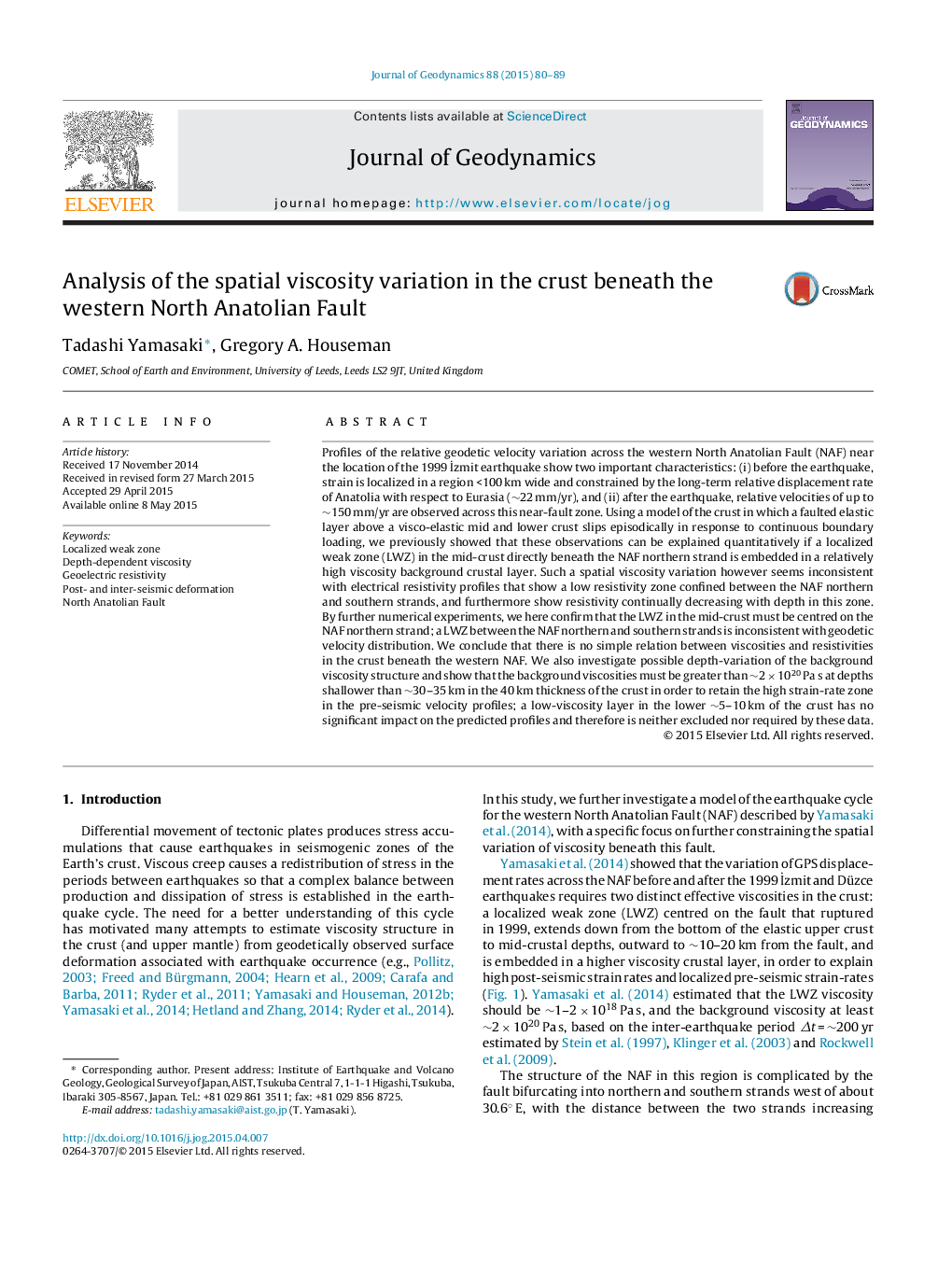| Article ID | Journal | Published Year | Pages | File Type |
|---|---|---|---|---|
| 4688040 | Journal of Geodynamics | 2015 | 10 Pages |
•GPS data require a weak zone within the mid-crust centred on the 1999 İzmit rupture.•Background crustal viscosities >∼2 × 1020 Pa s are required at depths <∼30–35 km.•No simple relation is found between viscosities and geoelectric resistivities.
Profiles of the relative geodetic velocity variation across the western North Anatolian Fault (NAF) near the location of the 1999 İzmit earthquake show two important characteristics: (i) before the earthquake, strain is localized in a region <100 km wide and constrained by the long-term relative displacement rate of Anatolia with respect to Eurasia (∼22 mm/yr), and (ii) after the earthquake, relative velocities of up to ∼150 mm/yr are observed across this near-fault zone. Using a model of the crust in which a faulted elastic layer above a visco-elastic mid and lower crust slips episodically in response to continuous boundary loading, we previously showed that these observations can be explained quantitatively if a localized weak zone (LWZ) in the mid-crust directly beneath the NAF northern strand is embedded in a relatively high viscosity background crustal layer. Such a spatial viscosity variation however seems inconsistent with electrical resistivity profiles that show a low resistivity zone confined between the NAF northern and southern strands, and furthermore show resistivity continually decreasing with depth in this zone. By further numerical experiments, we here confirm that the LWZ in the mid-crust must be centred on the NAF northern strand; a LWZ between the NAF northern and southern strands is inconsistent with geodetic velocity distribution. We conclude that there is no simple relation between viscosities and resistivities in the crust beneath the western NAF. We also investigate possible depth-variation of the background viscosity structure and show that the background viscosities must be greater than ∼2 × 1020 Pa s at depths shallower than ∼30–35 km in the 40 km thickness of the crust in order to retain the high strain-rate zone in the pre-seismic velocity profiles; a low-viscosity layer in the lower ∼5–10 km of the crust has no significant impact on the predicted profiles and therefore is neither excluded nor required by these data.
